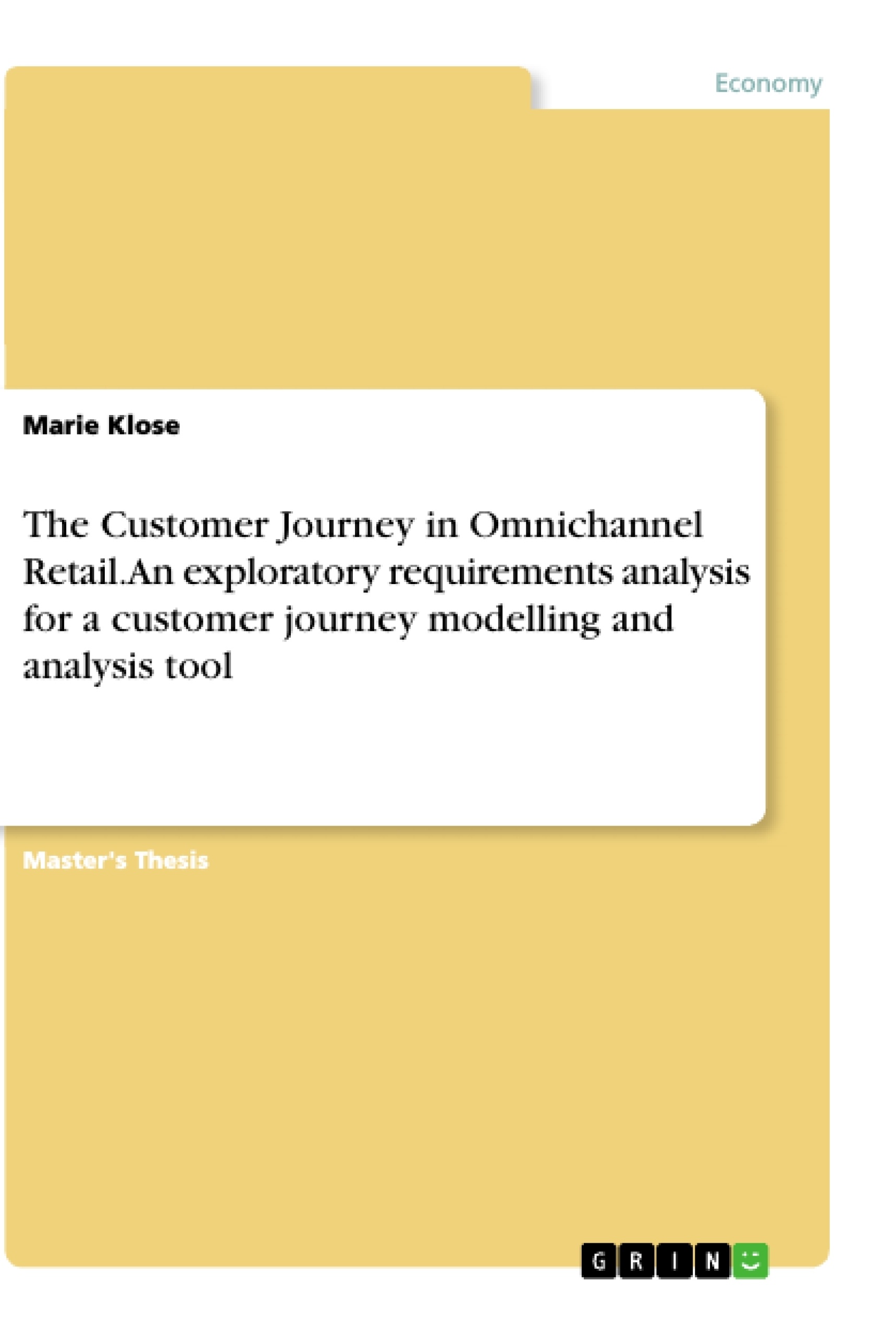The customer journey is a central topic for all retailers to consider to be able to successfully manage customer experience and to thereby ensure the survival of a business. Hence, managing and influencing customer journeys has been of importance since the emergence of retailing.
However, to successfully manage customer journeys has become increasingly complex with the development of omnichannel retail. Classical techniques to analyze and influence customer journeys are insufficient for today’s customers who are seamlessly using multiple devices and switching between different channels during their purchase journey while expecting a uniform and personalized customer experience.
This research paper studies the topic of customer journey analysis in omnichannel retail and discusses which requirements need to be fulfilled to successfully model, analyze and influence the respective customer journeys. By conducting a systematic literature review it was proven that a tool is needed to model and analyze individual customer journeys in omnichannel retail in real-time, making use of online and offline customer data. Through the method of semi-structured interviews, requirements that are related to developing and deploying such a tool were collected in an exploratory way.
This is from scientific importance as until now few research has addressed the topic of ways to model and analyze customer journeys in omnichannel retail. Additionally, with rising customer expectations and an increased competition between retailers, the importance of successfully managing customer journeys is indispensable in retailing.
The findings of this paper imply a high probability of an increasing need to deploy a customer journey modelling and analysis tool by omnichannel retailers. However, further in-depth analysis and specification of characteristics that this tool requires to fulfill are needed to successfully develop it.
Inhaltsverzeichnis (Table of Contents)
- Introduction
- Motivation
- Problem formulation
- Research questions
- Intended Contribution
- Structure of the thesis
- Methodology
- Research approach
- Research design
- Research strategy
- Data collection
- Sampling approach
- Data analysis
- Ethical considerations
- Potential weaknesses
- Research approach
- Literature Review
- Description of the process
- Omnichannel retail practices
- Customer journey
- The customer journey concept
- Customer journey phases
- Customer journey touchpoints
- Customer journey analysis techniques
- Chapter summary
- Empirical presentation
- Preliminary framework
- Findings and analysis
- Requirements derived from the omnichannel literature
- Requirements derived from the customer journey literature
- Requirements derived from the customer journey touchpoints and phases literature
- Requirements derived from the customer journey modelling tools literature
- Additional requirements derived from the interviews
- Recommendation
- Methodology
- Technology
- Data gathering
- Data analysis
- Implications
- Concluding remarks
- Reflection of the research approach
- Conclusion regarding the research questions
- Critical evaluation and recommendation for future research
Zielsetzung und Themenschwerpunkte (Objectives and Key Themes)
The research paper aims to explore the requirements for developing a customer journey modelling and analysis tool for omnichannel retailers. It investigates how such a tool can be used to effectively model, analyze, and influence customer journeys in a rapidly evolving omnichannel environment.
- Analyzing the customer journey in the context of omnichannel retail
- Identifying requirements for a customer journey modelling and analysis tool
- Exploring the use of online and offline customer data for real-time analysis
- Examining the potential benefits and challenges of implementing such a tool
- Discussing the implications for omnichannel retailers and future research
Zusammenfassung der Kapitel (Chapter Summaries)
The introduction provides the motivation, problem formulation, research questions, intended contribution, and structure of the thesis. It establishes the significance of understanding and managing customer journeys in omnichannel retail, highlighting the need for effective tools to analyze and influence these journeys.
The methodology chapter outlines the research approach, including the research design, data collection methods, sampling approach, data analysis techniques, ethical considerations, and potential weaknesses. It explains the rationale for the chosen approach and its limitations.
The literature review chapter explores the concepts of customer journey analysis, omnichannel retail, and customer experience. It delves into the existing research on customer journey modelling tools and techniques, highlighting key aspects relevant to the research question.
The empirical presentation chapter presents the findings and analysis of the research. It discusses the requirements for a customer journey modelling and analysis tool derived from the literature review and interviews with industry experts.
The recommendation chapter provides suggestions for the development and implementation of a customer journey modelling and analysis tool. It covers aspects like methodology, technology, data gathering, data analysis, and implications for omnichannel retailers.
The concluding remarks chapter summarizes the research findings, reflects on the chosen research approach, and offers recommendations for future research. It emphasizes the need for further exploration and development of customer journey modelling and analysis tools in the omnichannel retail landscape.
Schlüsselwörter (Keywords)
The primary focus of this research paper is on customer journey analysis, omnichannel retail, customer experience, and the development of a customer journey modelling and analysis tool. It examines the use of online and offline customer data for real-time analysis, aiming to improve the understanding and management of customer journeys in the omnichannel environment.
- Quote paper
- Marie Klose (Author), 2018, The Customer Journey in Omnichannel Retail. An exploratory requirements analysis for a customer journey modelling and analysis tool, Munich, GRIN Verlag, https://www.grin.com/document/456319




